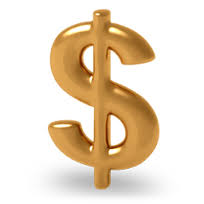It is an investment strategy to reduce the volatility in the market by planning the purchase of financial assets over a long-term. In this technique you keep on buying an asset by investing a fixed amount on a regular basis regardless of the share price. This method is alternatively known as unit cost averaging. It might not be the most effective or profitable method but it reduces a lot of risk as you keep buying shares at different prices and in the long run the cost per unit would become less that the market value.
This strategy helps to reduce the chance of buying all the shares at the wrong price and A if there is a dramatic fall in the prices of the assets the shock would be much lesser for stocks bought using this method in comparison of other methods. This method is best if:
- You don’t have all the money to invest at once but will have some or all of it in the future
- If you want to limit your risk
This method is best suited for people having very low risk tolerance. You stop reacting to market stimuli is high because it is just another price for you and hence you stop yourself from taking rash decisions. If the price falls it would be an advantage to you as your cost per unit would grow. Even if the fall of price of stocks would reduce the cost per unit but if the price is in a free fall or has continued to do so for a while it is recommended to look at the quality of the stock you are holding.
The most important thing that one should remember while using this technique is to select the right company as it is with most techniques. Finding the right stock to buy is most important work while investing in any market.
Analysis of Buying at bulk vs. Dollar Average Costing technique
Let’s say you plan to buy shares of WIPRO Ltd at the beginning of the year with an amount of 1, 00,000.At the price of 200 per share he can buy 500 shares.
However you planned to purchase it at the beginning of 4 quarters equally so you will spend 25,000 each quarter.
- In Q1 you buy at 200 per share you will buy 125 shares.
- In Q2 the price of the share is say 250 then you buy 100 shares.
- In Q3 say the prices falls to 100 per share then you would buy 250 shares
- In the Q4 the price are at 350 then you only buy approx. 71 shares.
So, the total number of shares bought is 125+100+250+71=546 shares with an avg. price of 197.5 per share.
So in this case you bought more shares at a lower price and hence you hedged your risk. This technique might not be advisable if the price keeps rising rather than fluctuating as the cost per unit will not come down drastically .
Click here for government certification in Accounting, Banking & Finance





11 Comments. Leave new
Good explanation
Amazing!
Informative.
Well done!
Well explained!
informative!
This was an interesting read.
Does the indifference to share cost not hurt in the longer run?
Well explained
Great job.
The article unfolds very neatly and efficiently.
Well executed.